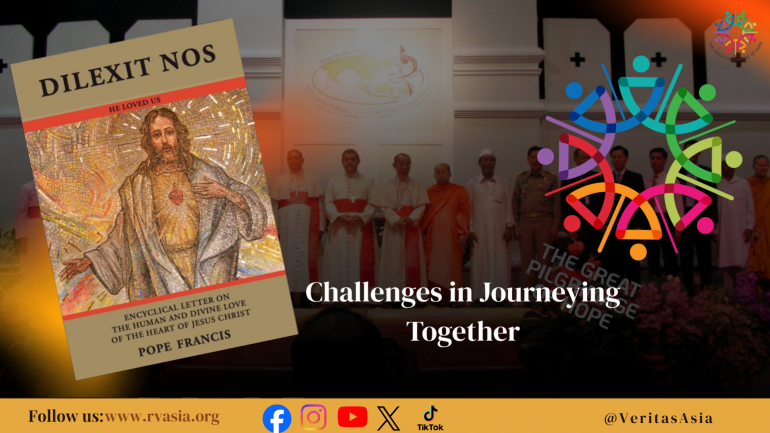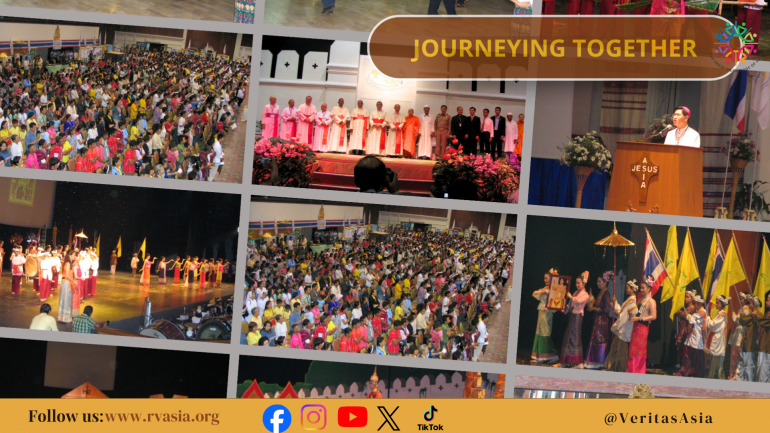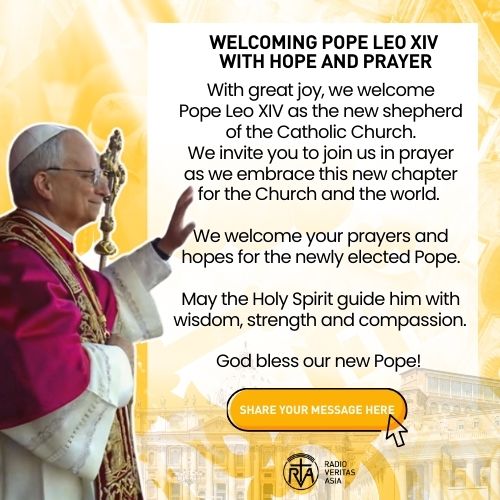Challenges in Journeying Together: The Great Pilgrimage of Hope

The Great Pilgrimage of Hope (GPH) will take place in Penang, Malaysia, from 27-30 November 2025, with a focus on exploring “new paths, narratives, and dynamics that are rooted in our Catholic identity and resonate with Asia's rich cultural tapestry through collaborative dialogue and shared wisdom.” Further, “the theme of the Great Pilgrimage of Hope captures the unique journey and calling of the Church in Asia: ‘Journeying together as peoples of Asia… and they went a different way’ (Mt 2:12).”
The GPH comes in the wake of the Church’s recent Synodal journey, which concluded last year and gave the Universal Church a renewed impetus toward communion and participation. Journeying together as the peoples of Asia, therefore, requires us to embrace several interrelated dimensions.
Listening Heart
This is a fundamental necessity, a heart that is open, sensitive, and responsive. Many of our problems today arise because we have little time or willingness to listen to others. In his incisive encyclical Dilexit Nos (“He has loved us”), Pope Francis encourages us to journey into our own hearts to rediscover our dignity, foster openness to others, and find the spiritual energy to act in the world.
The Poor
While Asia is home to some of the richest people in the world, it also houses an enormous proportion of the world’s poor. Over 320 million people in Asia live in extreme poverty on less than USD 2.15 per day, while more than 700 million live below the slightly higher global poverty line of USD 1.25 per day. India has the largest number of people living in poverty (234 million), followed by Pakistan (93 million).
In his first major pronouncement, Dilexi Te (“I have loved you”), Pope Leo XIV reminds us that we must be a Church for and with the poor, committed to addressing the structural forms of poverty.
Refugees and Migrants
At the heart of the Church’s vision for a humane and just society is the plight of refugees and migrants everywhere. During a 2017 visit to Bangladesh, Pope Francis took a strong stand for the Rohingya people, calling them his “brothers.” In Dilexi Te, Pope Leo XIV emphasizes our responsibility to accompany migrants and refugees with compassion, solidarity, and advocacy.
War and Violence
Resisting war and violence is the need of the hour in Asia. The region is the theatre of 19 non-international armed conflicts (NIACs) involving multiple armed groups across Afghanistan, India, Myanmar, Pakistan, and the Philippines.
The Church has consistently denounced the arms race, nuclear proliferation, and every form of violence, domestic, local, and international. India has given the world Mahatma Gandhi, the apostle of non-violence. As Asians, we are called to make the biblical vision a reality:
“They shall beat their swords into ploughshares, and their spears into pruning hooks;
Nation shall not lift up sword against nation, neither shall they learn war anymore.” (Is 2:4)

Collaboration
In several Asian countries today, democracy is being eroded and the spirit and letter of national constitutions systematically undermined. Sections of the corporate sector, in nexus with unscrupulous political actors, control the lives and destinies of millions.
Christians must collaborate with civil society and other like-minded groups to confront fundamentalist, fascist, and extremist forces that seek to divide and demonize communities, and instead work toward a more humane, just, and peaceful society.
People of Other Faiths
From time immemorial, Asia has been the cradle of the world’s major religions. Judaism, Christianity, Islam, Buddhism, Taoism, Confucianism, Zoroastrianism, Jainism, Sikhism, and Shintoism were all born here, alongside countless folk and tribal traditions.
It is essential for the Church to recognize and embrace what is good in these religions and cultures, engage in meaningful interreligious dialogue, seek commonalities, and foster mutual respect for a more dignified, equitable, and harmonious world.
Youth
Asia is home to over 60% of the world’s youth population, making it the most youthful region globally. Yet young people face significant challenges: unemployment, mental-health concerns, educational disparities, and a wide range of political, socioeconomic, and environmental issues. Recent political movements in Nepal, Bangladesh, and Sri Lanka, for instance, saw young people leading nationwide protests.
Among the young delegates from Ranchi, India, attending the GPH will be Ms Sneha Violet Kindo, Assistant Professor of Economics.
She shares her expectations candidly: “As an Asian youth, I truly believe that the Church must adapt to the present circumstances and widen its ambit to increase the participation of the youth… The Church must incorporate the recommendations made by young people and introduce transformative changes so that more hearts may turn towards the Lord. This will help the Church connect with more people, especially the youth, because prayer nurtures spiritual and emotional maturity. In Asia, composed mostly of developing countries, the Church is doing well. It only needs to allow the youth to be themselves and experience the love of Christ.”
The agenda is clearly before us. It is imperative that the Catholic Church of Asia begin journeying together with deep faith and prophetic courage, convinced that Jesus will accompany us through thick and thin. Now is the opportune time.








